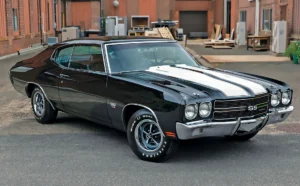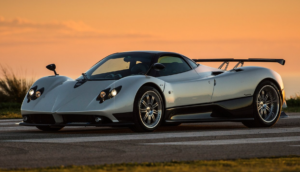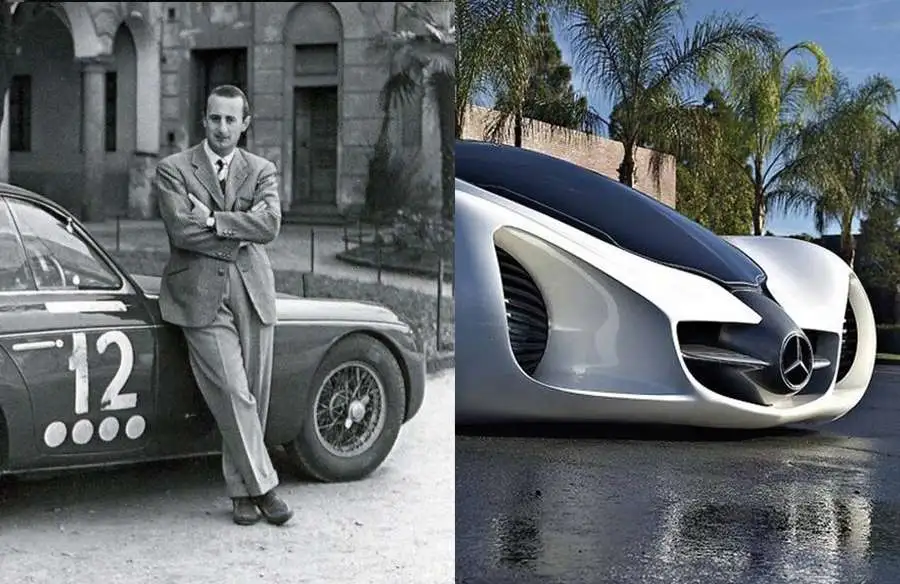Sports cars have captivated car enthusiasts and casual drivers alike for over a century. Known for their performance, sleek design, and the pure joy of driving, sports cars have evolved significantly since their inception. From the early models that were raw and mechanical to today’s high-tech machines packed with innovations, the history of sports cars is a fascinating journey through time, innovation, and engineering prowess. Let’s explore this evolution, charting how sports cars have changed and what the future might hold.
1. The Birth of the Sports Car: Early 1900s
The concept of the sports car emerged in the early 20th century. At the time, most cars were utilitarian and slow, designed to move people from one place to another. However, a few visionaries saw the potential for automobiles to offer excitement and thrill, not just practicality.
One of the earliest examples of a sports car is the 1914 Vauxhall 25-hp ‘Prince Henry.’ It was designed for competition, emphasizing speed and agility. This marked the beginning of cars that were specifically built to offer more than just transportation; they were built for enthusiasts who craved speed and performance.
In the 1920s and 1930s, brands like Bentley, Bugatti, and Alfa Romeo started gaining recognition for their fast and elegant machines. Bugatti’s Type 35, for instance, was a race car that dominated European Grand Prix racing in the 1920s. These early sports cars were lightweight and nimble, with engines that, though primitive by today’s standards, were the peak of performance for their time.
2. Post-War Boom: 1940s and 1950s

The end of World War II saw a boom in the sports car market. Returning soldiers, especially in America, had been exposed to lightweight European cars like the MG and Jaguar and wanted similar vehicles for personal use. The 1940s and 1950s became a golden age for sports car development.
In Europe, brands like Ferrari and Porsche emerged, becoming household names in the world of performance vehicles. Ferrari’s first production car, the 125 S, debuted in 1947, featuring a V12 engine. This car set the tone for Ferrari’s future: a commitment to power, speed, and luxury.
In the United States, Chevrolet introduced the Corvette in 1953, which would become America’s sports car icon. Initially, the Corvette struggled with performance, but with the introduction of a V8 engine in 1955, it gained the power and prestige that it’s known for today.
The Jaguar XK120, launched in 1948, was also significant during this time, as it was the fastest production car in the world, capable of speeds over 120 mph. This period solidified the identity of sports cars: fast, sleek, and built for driving pleasure.
3. The Muscle Car Era: 1960s and 1970s
While European manufacturers were refining sports cars with a focus on agility and precision, the 1960s and 1970s saw the rise of the muscle car in the United States. These were powerful, straight-line beasts designed for high-speed acceleration, often featuring large V8 engines that emphasized raw power over handling.
The Ford Mustang, introduced in 1964, became a symbol of American muscle, combining the concept of a sports car with a more affordable price point, making it accessible to the masses. The Mustang, alongside the Chevrolet Camaro and Dodge Challenger, formed the trinity of American muscle cars, offering speed and excitement for less money than European imports.
During this time, sports cars also began to diversify. While the American market was dominated by muscle, European manufacturers like Ferrari, Porsche, and Aston Martin continued to refine their cars for precision driving. The Porsche 911, introduced in 1964, became one of the most iconic sports cars ever made, combining speed, reliability, and everyday usability.
4. Technological Advancements: 1980s and 1990s

The 1980s marked a shift in sports car design and engineering, driven largely by advancements in technology. Turbocharging became more common, as manufacturers sought to extract more power from smaller engines. The Porsche 959, released in 1986, was one of the most technologically advanced cars of its time, featuring a twin-turbocharged engine, all-wheel drive, and a suite of electronic driving aids. It was not just a fast car; it was a demonstration of what technology could do for performance.
Ferrari also continued to push the boundaries with the release of the F40 in 1987. It was the last car approved by Enzo Ferrari himself and became one of the most revered sports cars of all time. With its twin-turbocharged V8 engine and minimalist design, the F40 was a raw, unfiltered driving experience, free from electronic aids and built purely for speed.
The 1990s saw sports cars becoming more sophisticated. The introduction of computer-aided design and manufacturing allowed for more precise engineering, while advancements in aerodynamics and materials (like carbon fiber) helped reduce weight and improve performance. The McLaren F1, released in 1992, became the fastest production car in the world, achieving a top speed of 240 mph, thanks to its lightweight construction and naturally aspirated V12 engine.
5. The Modern Era: 2000s to Present
The 2000s and beyond have seen sports cars evolve into even more advanced machines. The rise of electronic aids like traction control, launch control, and dynamic suspension systems has made modern sports cars faster, safer, and easier to drive than ever before.
In the early 2000s, the Bugatti Veyron shattered speed records, becoming the first production car to break the 250 mph barrier. It combined a massive 8.0-liter W16 engine with four turbochargers and advanced aerodynamics to achieve this remarkable feat.
Today’s sports cars, like the Ferrari 488, Porsche 911 Turbo, and Chevrolet Corvette C8, represent the pinnacle of automotive engineering. They offer incredible performance, but they also come equipped with advanced safety features, infotainment systems, and even eco-friendly technologies like hybrid powertrains.
6. The Future of Sports Cars: Electrification and Autonomous Technology

As we look to the future, the sports car market is at a crossroads. The push for electrification is transforming the automotive industry, and sports cars are no exception. Brands like Tesla have already proven that electric vehicles (EVs) can be fast, with the Tesla Roadster promising a 0-60 mph time of under 2 seconds. Traditional manufacturers like Porsche and Ferrari are also investing heavily in electric and hybrid sports cars.
The Porsche Taycan, an all-electric sports sedan, is a sign of things to come. It combines the performance Porsche is known for with the eco-consciousness of an electric powertrain. Ferrari has also entered the hybrid market with the SF90 Stradale, a plug-in hybrid that offers blistering performance while reducing emissions.
Autonomous driving technology is another area that could potentially reshape the sports car industry. While sports cars are all about the driving experience, the introduction of self-driving features could lead to new possibilities. Imagine a car that can handle the mundane task of commuting, but when you hit the open road, it hands control back to the driver for a thrilling experience.
7. Conclusion
From the early days of lightweight racers to today’s technological marvels, the evolution of sports cars has been driven by a passion for performance and innovation. The future of sports cars will likely see even more dramatic changes, with electric powertrains and autonomous technologies playing a major role. However, one thing will always remain true: sports cars will continue to offer a unique and exhilarating driving experience for enthusiasts around the world.

